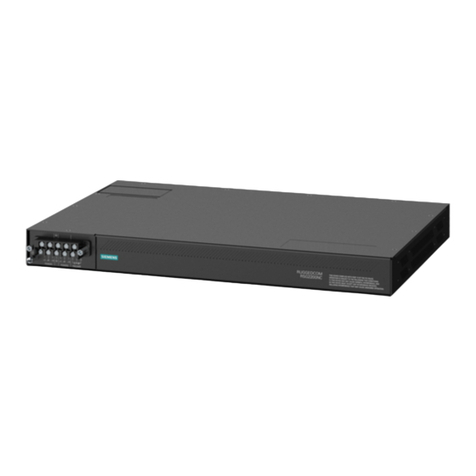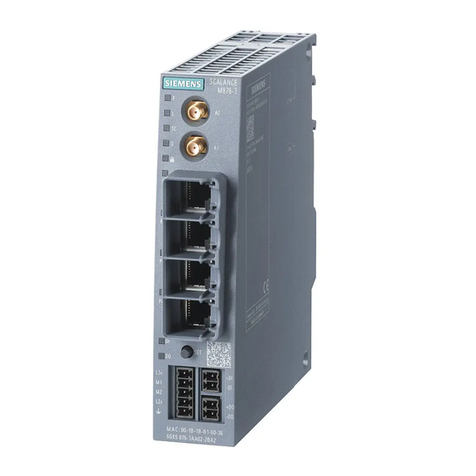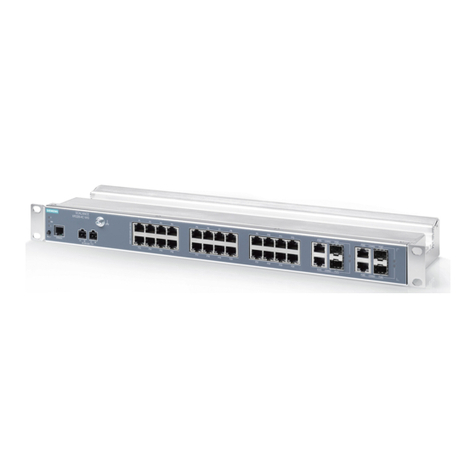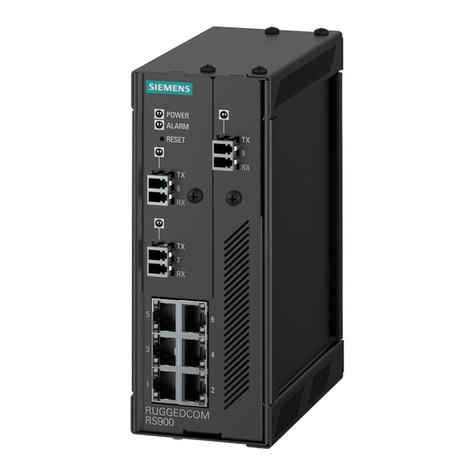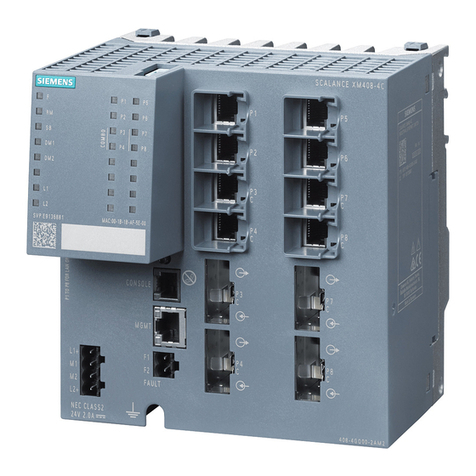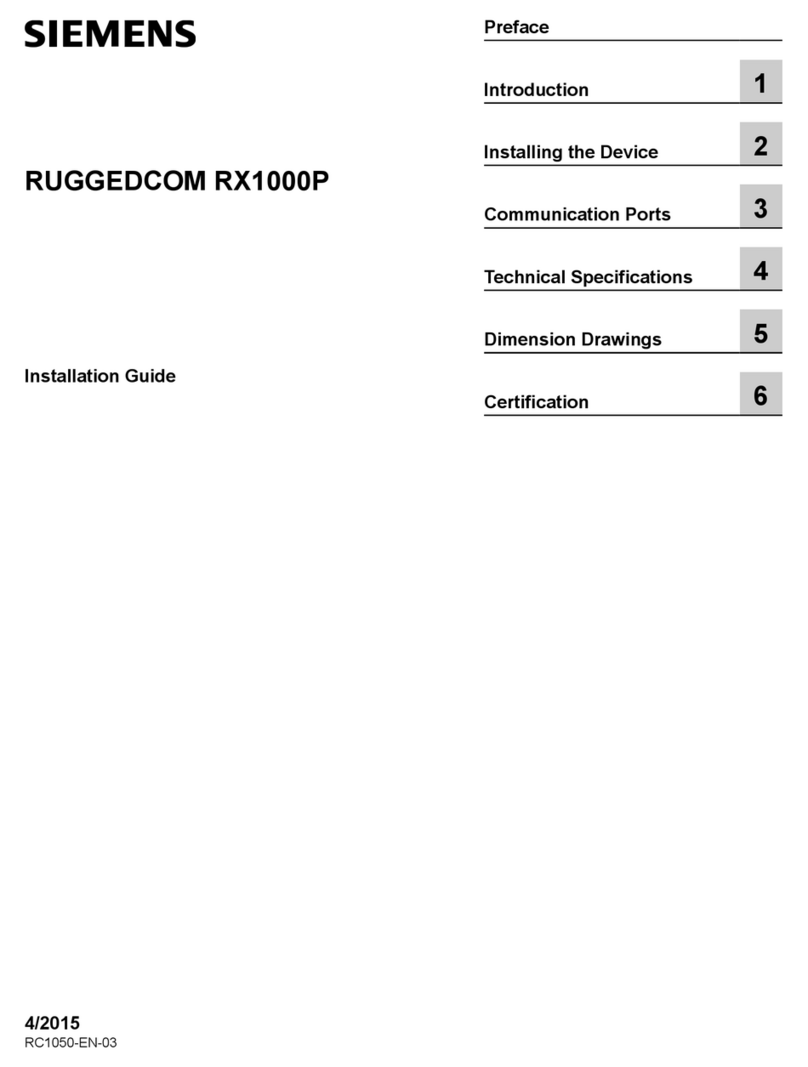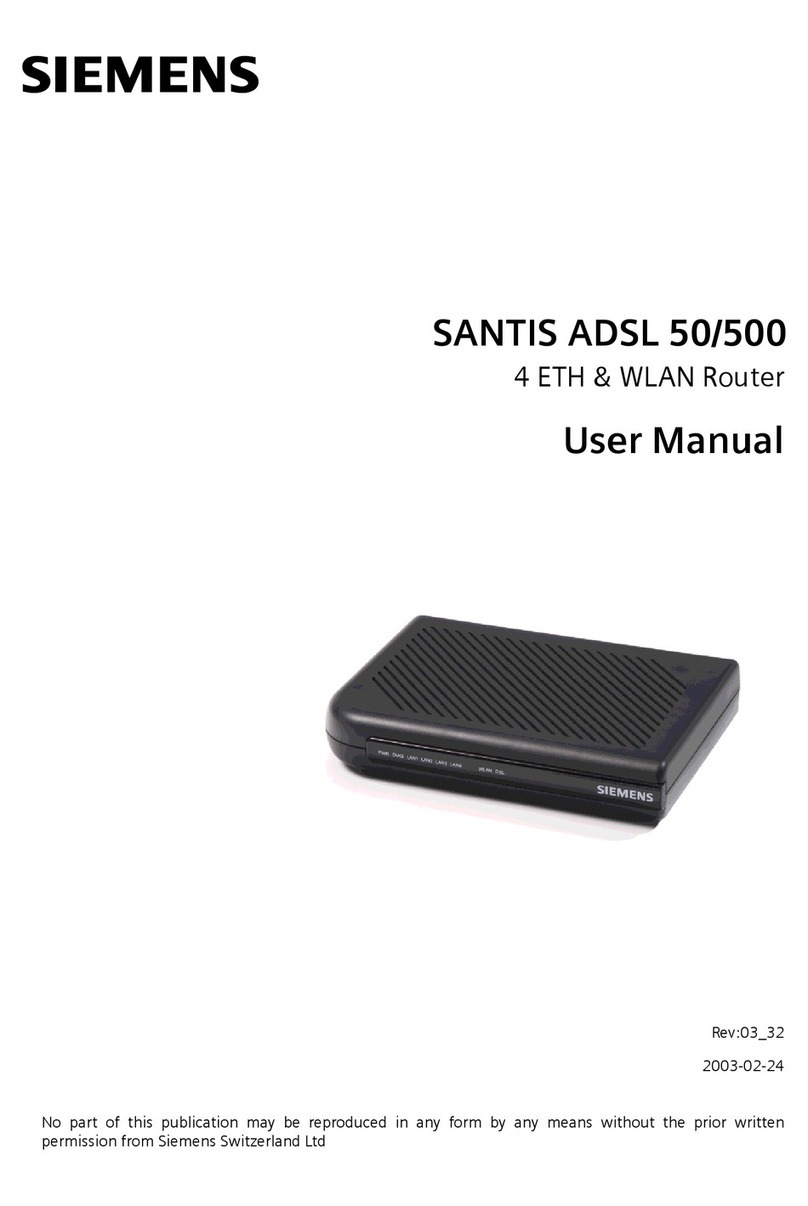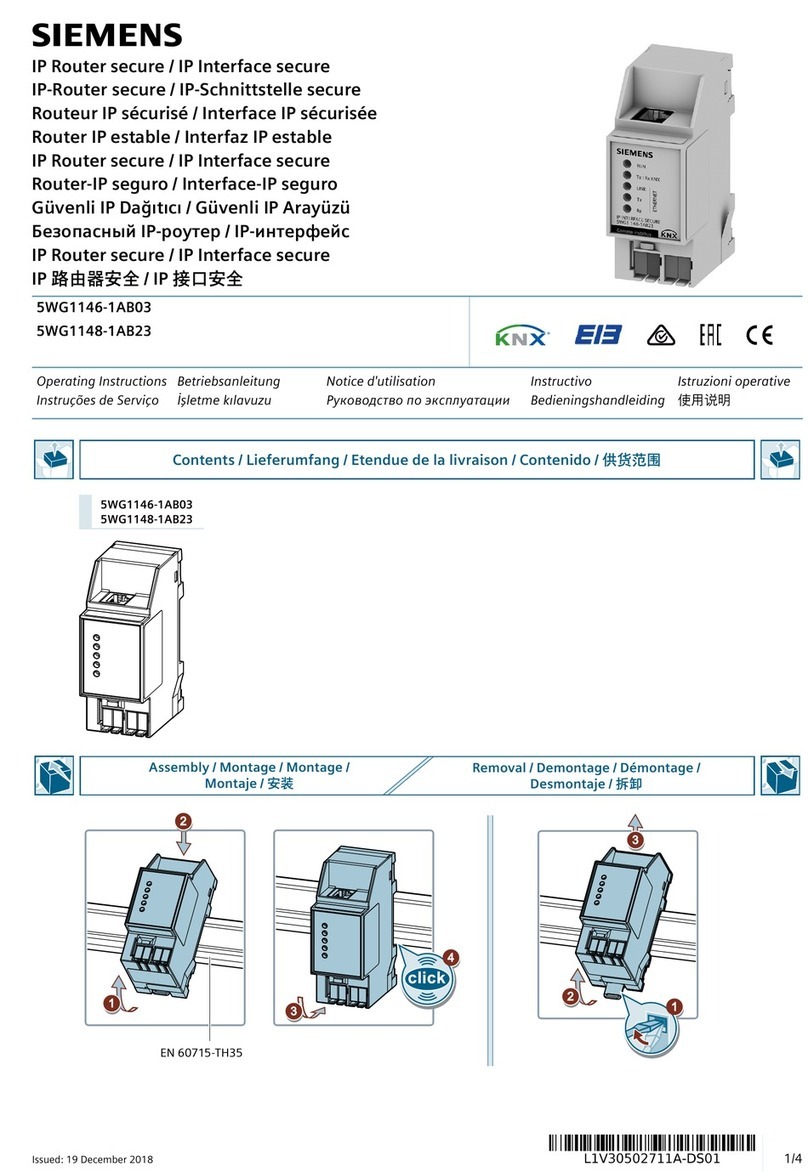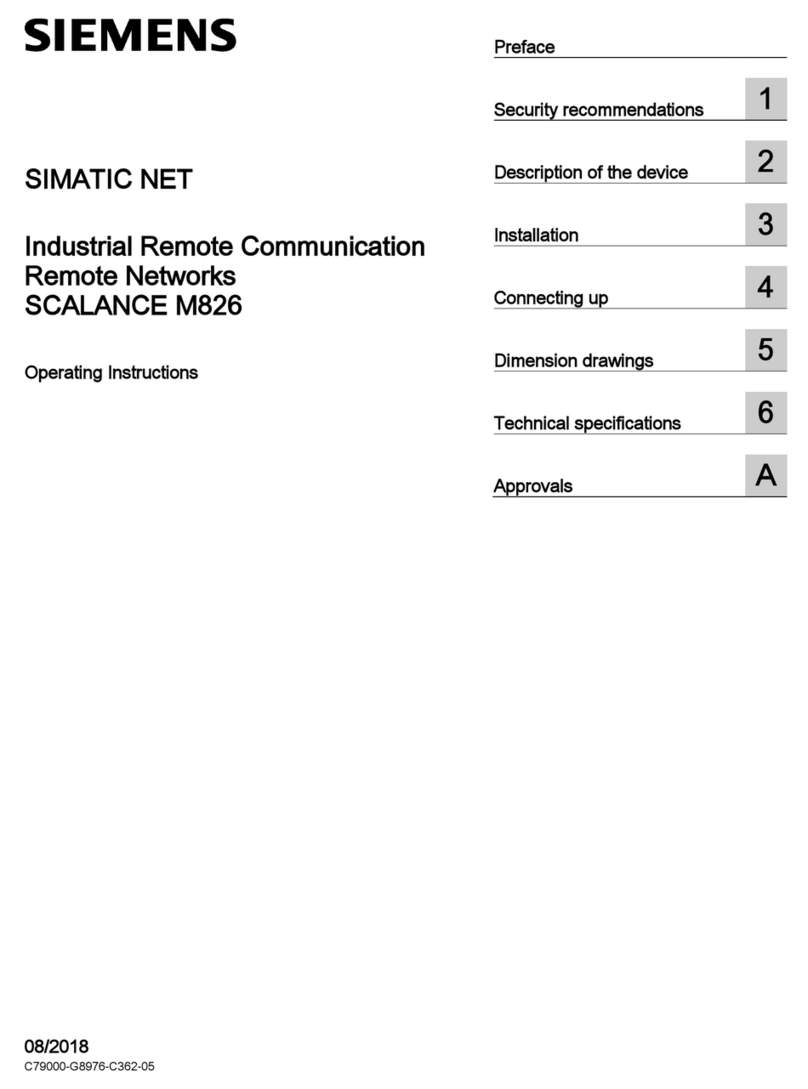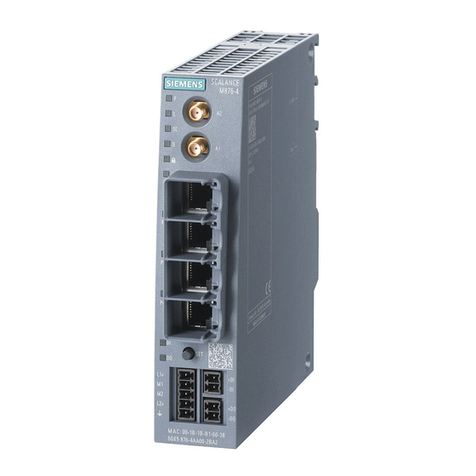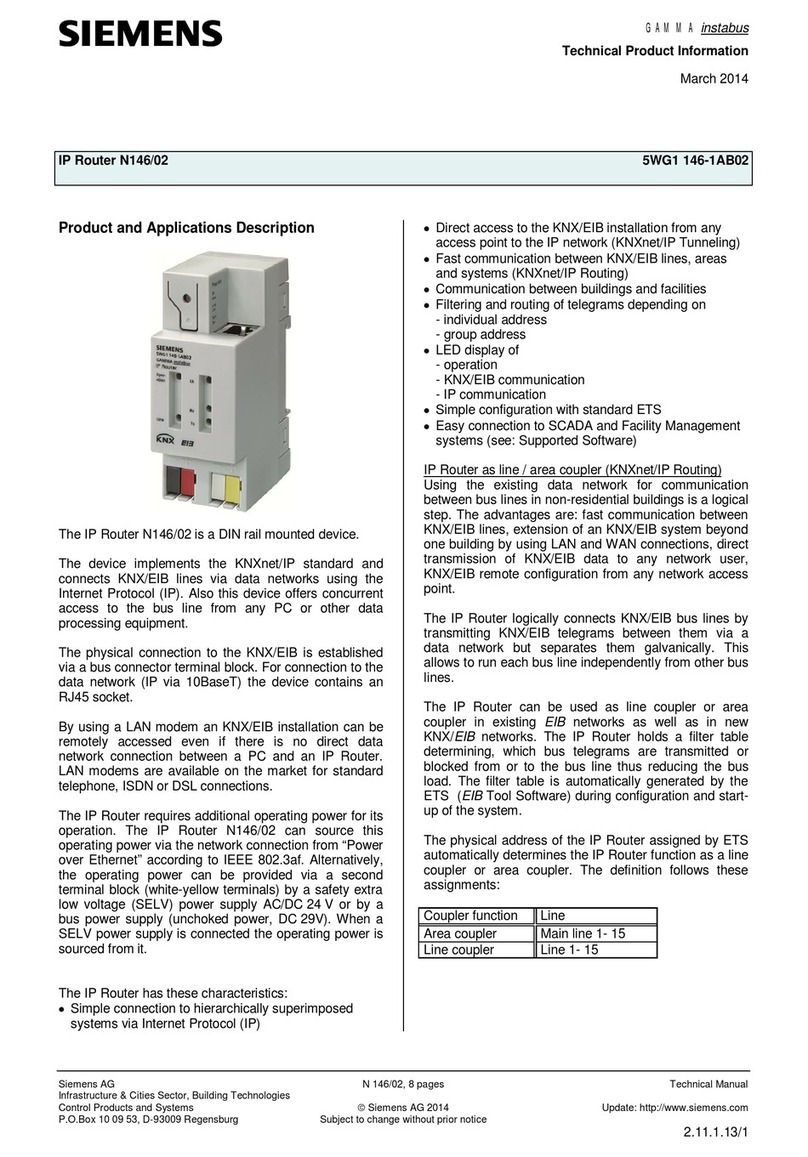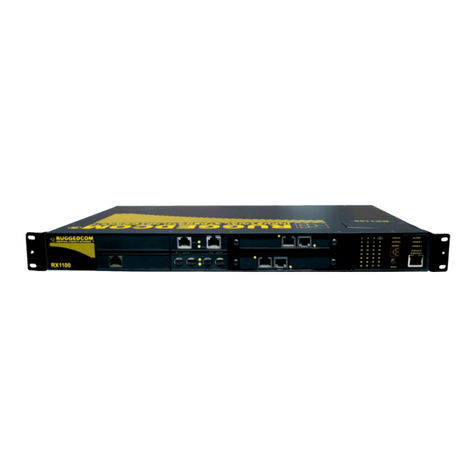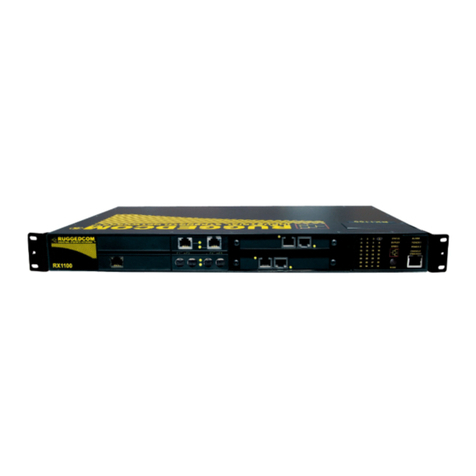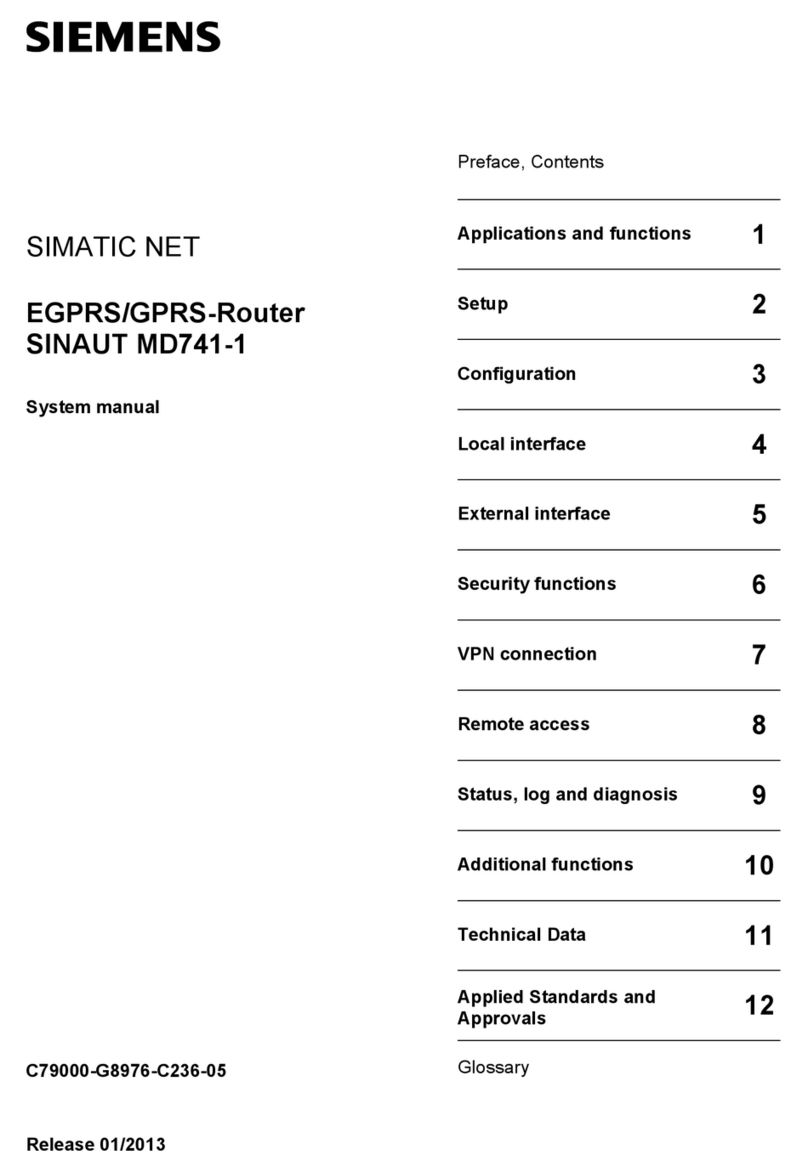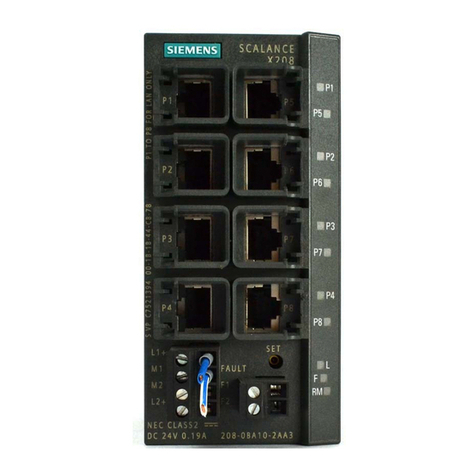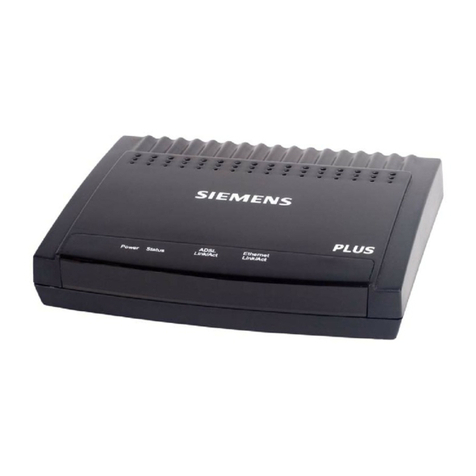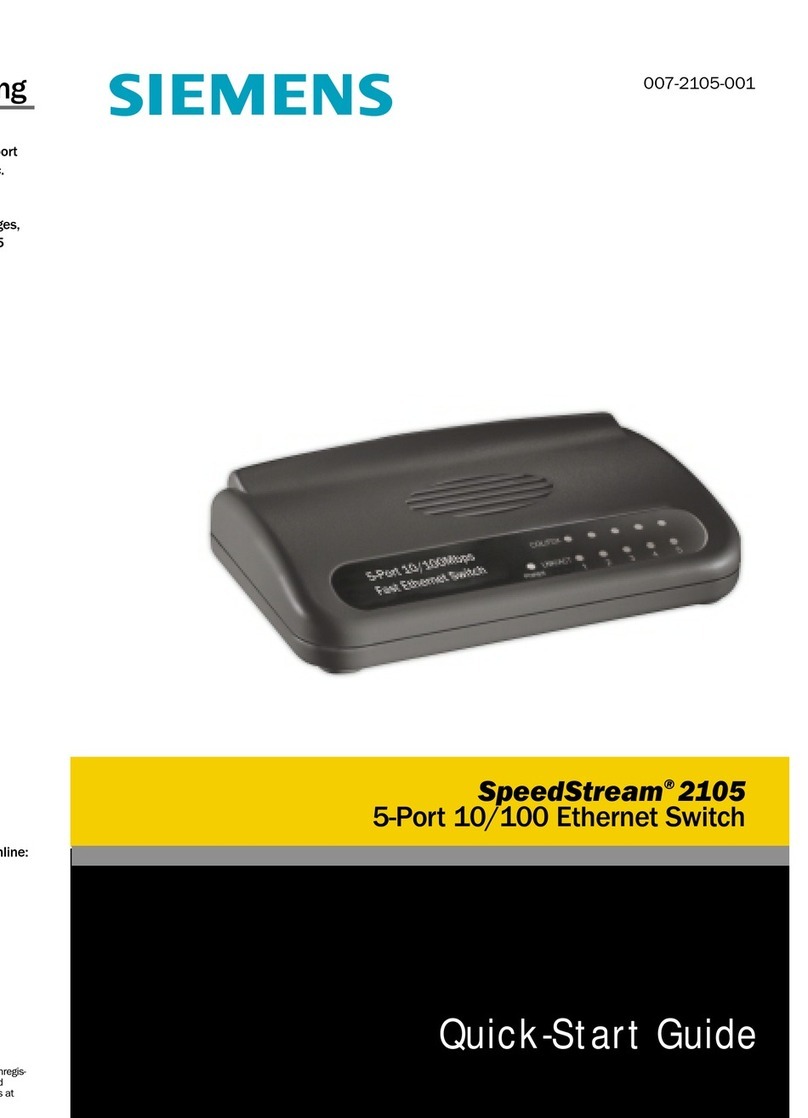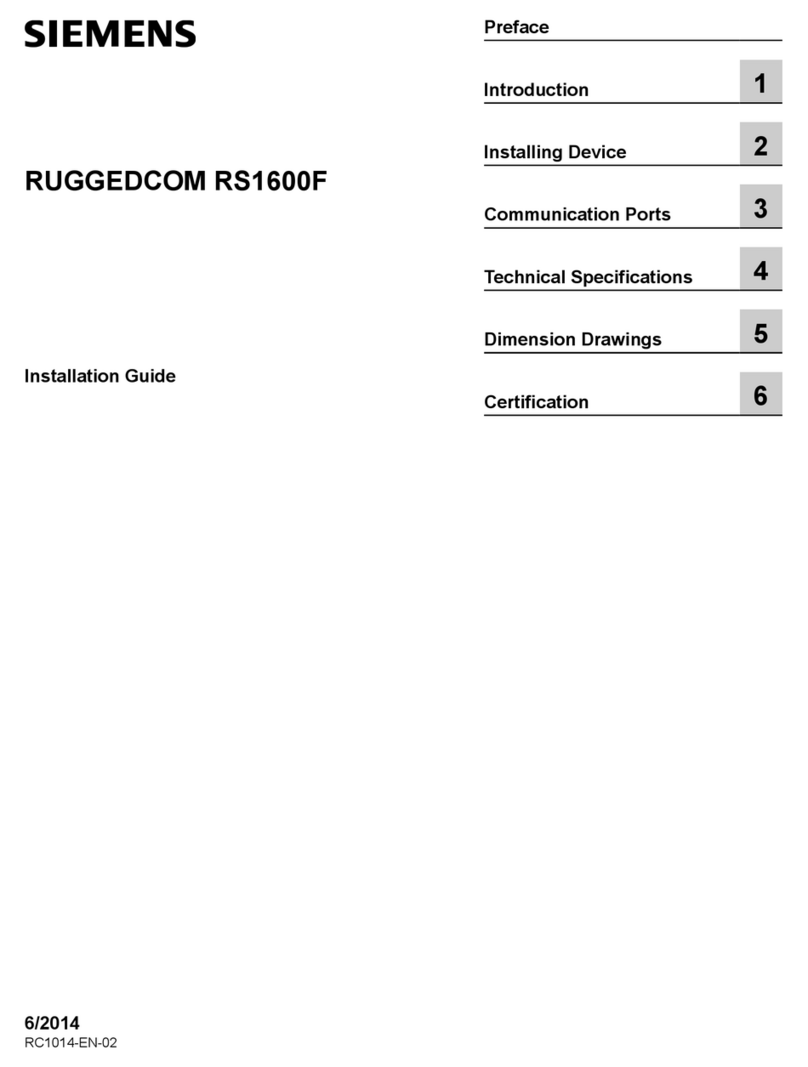
GAMMA instabus
IP Router N 146
IP Router N 146 5WG1 146-1AB01
Bedien- und Montageanleitung
Operating and Mounting Instructions
Stand: Januar 2007
Issued: January 2007
LN
Bus
AC/DC 24 V
Spannungsversorgung
N 125 / 21
Linie 2
Linie 3
Linie 4
Linie 1
IP Router
N 146
Ethernet
TCP / IP
Hub
Bild 1 / figure 1
D
Produkt- und Funktionsbeschreibung
Der IP Router N146 ist ein Reiheneinbaugerät zum Einbau in
Verteilungen. Das Gerät verbindet EIB Linien miteinander über
Datennetzwerke unter Nutzung des Internet Protokolls (IP).
Zugleich bietet dieses Gerät die Kommunikation von EIB Gerä-
ten mit PC’s oder anderen Datenverarbeitungsgeräten.
Die Verbindung zum EIB wird über eine Busanschlussklemme
hergestellt. Die Verbindung zum Datennetzwerk (IP über
10BaseT) erfolgt über eine RJ45 Buchse.
Für den Betrieb benötigt der IP Router zusätzlich AC/DC 24 V,
die über einen zweiten Klemmenblock eingespeist werden. Die
Stromversorgung des IP Routers erfolgt über diesen Betriebs-
spannungsanschluss. Dies ermöglicht das Melden von Bus-
spannungsausfall über das Datennetzwerk.
Der IP Router nutzt den EIBnet/IP Standard, so dass über ein IP
Netzwerk EIB Telegramme zwischen Linien weitergeleitet wer-
den können und zugleich der Buszugriff von einem PC erfolgen
kann.
Der IP Router N 146 verbindet über ein Datennetzwerk zwei ge-
trennte EIB-Buslinien datenmäßig miteinander, trennt sie je-
doch galvanisch voneinander. Dadurch kann jede Buslinie im lo-
kalen Betrieb unabhängig von anderen Linien betrieben werden.
Der N 146 ist einsetzbar als Linienkoppler oder Bereichskopp-
ler, sowohl in bestehenden EIB-Netzwerken als auch in neuen
KNX EIB-Netzwerken. Er enthält Filtertabellen, mit deren Hilfe
bestimmte Bustelegramme von oder zur Buslinie entweder ge-
sperrt oder durchgeschleust werden und trägt so zur Verringe-
rung der Busbelastung bei. Die Filtertabelle wird von der ETS
(EIB Tool Software) bei Parametrierung und Inbetriebnahme der
Anlage automatisch erstellt.
Weitere Informationen
http://www.siemens.de/gamma
Technische Daten
Netzwerkkommunikation
•Ethernet:
10BaseT (10 Mbit/s)
•Unterstützte Internet Protokolle:
ARP, ICMP, IGMP, UDP/IP, DHCP
•EIBnet/IP gemäß Konnex System Spezifikation:
Core, Routing, Tunneling, Device Management
Bemessungsspannung
•Bus: DC 24V (DC 21...30V)
•Hilfsspannungsversorgung:
AC/DC 24V (AC/DC 12...30V)
Spannungsversorgung
•Busspannung: erfolgt über die EIB Buslinie
•Betriebsspannung:
aus externer Sicherheitskleinspannung AC/DC 24V nominal,
zulässiger Eingangsspannungsbereich:
AC/DC 12 ... 30 V
•Empfohlene Spannungsversorgungen:
–Klingeltransformator 4AC3 108, AC 230V / AC 2x12V (pri-
mär / sekundär), 2x0,33A, 2TE breit
–Klingeltransformator 4AC3 116, AC 230V / AC 2x12V (pri-
mär / sekundär), 2x0,0,67A, 2TE breit
–Klingeltransformator 4AC3 140, AC 230V / AC 2x12V (pri-
mär / sekundär), 2x1,67A, 3TE breit
VVORSICHT
•Die externe Sicherheitskleinspannung wird durch das Gerät
mit dem Potential des LAN verbunden. Damit besteht keine
Isolation mehr zur Erde, wenn der LAN-Schirm geerdet wird.
•Es wird empfohlen, die externe Kleinspannungsversorgung
nur für den IP Router N146 zu verwenden.
Stromaufnahme
•aus der Buslinie: max. 10mA bei DC 29V
•aus der Hilfsspannungsversorgung: max. 800mW
(25mA bei DC 24V)
Anschlüsse
•Linie: Busklemme (schwarz-rot), schraubenlos
0,6...0,8mm Ø eindrähtig
Abisolierlänge 5mm
•Ethernet / IP Netzwerk: RJ45 Buchse
•Spannungsversorgung:
Busklemme (gelb-weiss), schraubenlos
0,6...0,8mm Ø eindrähtig
Abisolierlänge 5mm
Mechanische Daten
•Abmessungen: Reiheneinbaugerät im N-Maß,
Breite 2 TE (1 TE = 18 mm)
•Gewicht: 100g
Elektrische Sicherheit
•Schutzart (nach EN 60529): IP 20
Umweltbedingungen
•Umgebungstemperatur im Betrieb: - 5 ... + 45 °C
•Lagertemperatur: - 25 ... + 70 °C
•rel. Feuchte (nicht kondensierend): 5 % bis 93 %
Seite 1 von 2
GB
Product and Applications Description
The IP Router N146 is a DIN rail mounted device.
The device connects EIB lines via data networks using the
Internet Protocol (IP). Also this device offers communication of
EIB devices with PC’s or other data processing equipment.
The physical connection to the EIB is established via a bus
connector terminal block. For connection to the data network
(IP via 10BaseT) the device contains an RJ45 socket.
To operate the IP Router requires AC/DC 24 V, which is
provided via a second terminal block. The IP Router is powered
via this operating voltage terminal connector. This allows the IP
Router to send a bus voltage failure notification onto the data
network.
The IP Router implements the EIBnet/IP standard for routing of
EIB telegrams between lines and for concurrent access to the
bus line from any PC.
The IP Router N146 logically connects EIB bus lines by trans-
mitting EIB telegrams between them via a data network but
separates them galvanically. This allows to run each bus line in-
dependently from other bus lines.
The N146 can be used as line coupler or area coupler in existing
EIB networks as well as in new KNX EIB networks. The N146
holds a filter table determining, which bus telegrams are
transmitted or blocked from or to the bus line thus reducing the
bus load. The filter table is automatically generated by the ETS
(EIB Tool Software) during configuration and start-up of the sys-
tem.
Additional Information
http://www.siemens.com/gamma
Technical Specifications
Network communication
•Ethernet:
10BaseT (10 Mbit/s)
•Supported Internet Protocols:
ARP, ICMP, IGMP, UDP/IP, DHCP
•EIBnet/IP according to Konnex System Specification:
Core, Routing, Tunneling, Device Management
Rated voltage
•Bus: DC 24V (DC 21...30V)
•Auxiliary power supply:
AC/DC 24V (AC/DC 12...30V)
Power supply
•Bus voltage: via EIB bus line
•Operating voltage:
from external SELV power supply AC/DC 24V nominal,
permissible input voltage range:
AC/DC 12 ... 30 V
•Recommended power supplies:
– door bell transformer 4AC3 108, AC 230V / AC 2x12V (pri-
mary / secondary), 2x0,33A, 2TE width
– door bell transformer 4AC3 116, AC 230V / AC 2x12V (pri-
mary / secondary), 2x0,0,67A, 2TE width
– door bell transformer 4AC3 140, AC 230V / AC 2x12V (pri-
mary / secondary), 2x1,67A, 3TE width
VCAUTION
•The device connects the external safety extra low voltage
with the LAN potential. If the LAN shield is connected to
earth ground then the isolation to ground is lost.
•It is recommended to use the external low voltage power
supply for the IP Router N146 only.
Power usage
•From the bus line: max. 10mA @ DC 29V
•From the auxiliary power supply: max. 800mW
(25mA @ DC 24V)
Connections
•bus line:
screwless bus connection block (red-black)
0,6...0,8 mm Ø single core
remove approx. 5mm of isolation
•Ethernet / IP network: RJ45 socket
•auxiliary power: screwless extra low voltage terminal (yel-
low-white) ∅0,6 ... 0,8 mm Ø single core
remove approx. 5mm of isolation
Physical specifications
•N-system DIN-rail mounted device,
width: 2 SUs (1SU = 18mm)
•weight: approx. 100g
Electrical safety
•protection (according to EN 60529): IP 20
Environmental specifications
•ambient temperature operating: - 5 ... + 45 °C
•storage temperature: - 25 ... + 70 °C
•relative humidity (non-condensing): 5 % to 93 %
•
page 1 of 2
2515154150 DS 02

